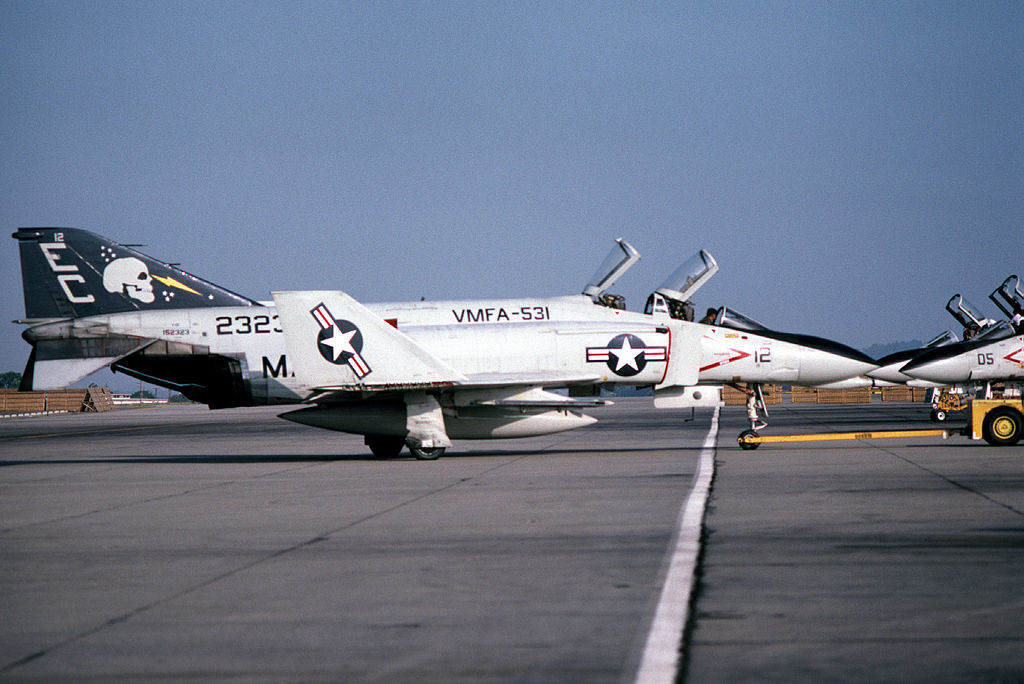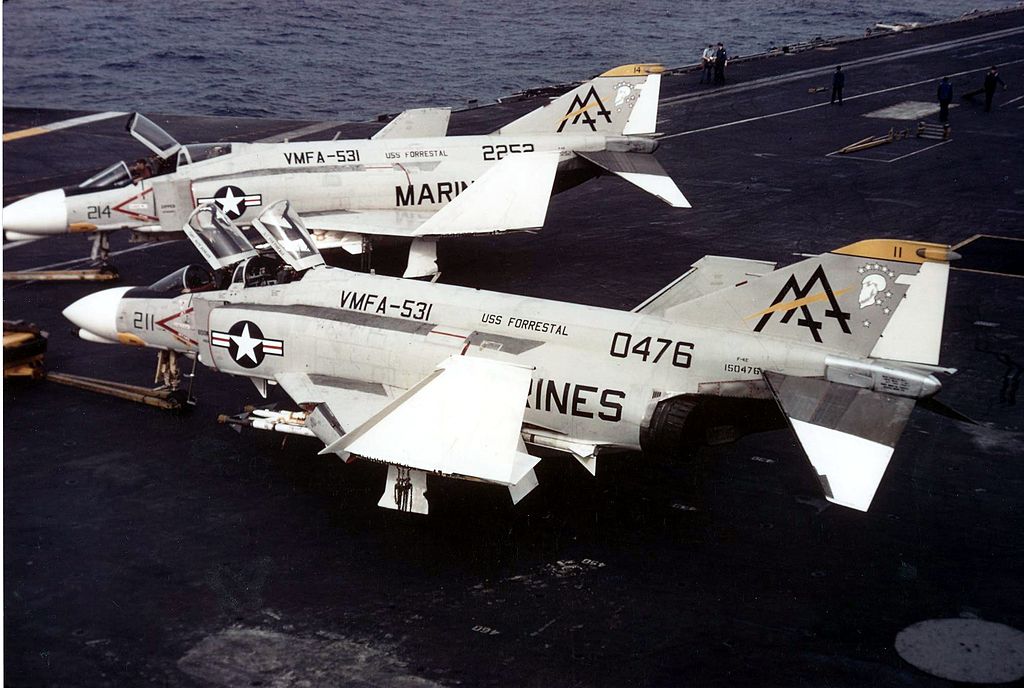“The two MiG-17s went into a 60-degree port turn. I immediately thought they saw us and I slid to the outside of their turn, re-confirmed I was ‘in Sidewinder’ and periodically when at the bogies’ six o’clock, I would hear that beautiful `Grrrrrr’ Sidewinder tone,” MGen Mike “Lancer” Sullivan, high-time Naval F-4 aviator
One of the most adaptable fighters ever created was the McDonnell two-place, twinjet, all-weather F-4 Phantom II, with top speeds exceeding the speed of sound. More Western air forces used it than any other plane in the first line. The F-4 was the fastest, highest-flying, and longest-range fighter in the U.S. Navy’s inventory just 31 months after its initial flight. It took off on May 27, 1958, and went into service a year later.
In response to the Cuban Crisis and Washington’s desire to have the most cutting-edge interceptors in place to counter the threat of Russian and Cuban aircraft, U.S. Navy and U.S. Marine Corps (USMC) F-4Bs were deployed to Key West in 1963, as explained by Peter E. Davies in his book Gray Ghosts, U.S. Navy and Marine Corps F-4 Phantoms. This position had previously been held by VF-41, and VF-102 on the USS Enterprise contributed to preserving the blockade of Cuba. According to Fred Staudenmayer, a former RIO for Phantom, VF-41’s relocation to the base, “had been initiated by one of SecDef MacNamara’s whiz kids without going through the usual Navy chain of command, a harbinger of the micro-management that was to follow. With the most sophisticated and effective airborne weapons systems available we assumed Alert status under the operational control of the Air Force to intercept anything coming up from the South. The MiGs never did, except to defect, but we did intercept an interesting assortment of Piper Cubs, transports, balloons, and boats.”‘ However, the Navy Phantoms‘ superiority over its USAF counterparts was not something the Air Force seemed to want to publicize at that time: “During a ‘keep up the good work’ visit just after the maximum crisis time President Kennedy toured the squadron lines of airplanes that had not been flying and bypassed us!”

Although the threat had subsided by the time the Gray Ghosts arrived, fighting against Cuban MiG-17s continued, giving Phantom crews some early insight into a potential foe. In his 23-year career flying the Marine Phantom, MGen Mike “Lancer” Sullivan, who holds the record for most Naval F-4 flying hours, had one such encounter while serving with VMF(AW)-531:
“C.C. Taylor, my RIO, and I launched on an airborne scramble, vectored 120 degrees for a bogie at 47 miles. We caught them before they went feet dry over the Cuban Keys. During the intercept, we lost contact with GCI, so our wingman climbed to an altitude where he could relay our instructions. We were at 800 ft doing Mach 1.1 in full afterburner at three miles with an overtaking speed of 470 kts and we got a ‘Break X’ just when GCI said to maintain a five-mile trail on the bogies. I didn’t have a visual on them, so I chopped power to idle with speed brakes out and did a high-g barrel roll to keep from flying out in front of the bogies. Luckily, we stabilized on their tail at about half a mile, and I saw them slightly high at 12 o’clock.

“C.C. Taylor was screaming that GCI said to maintain a five-mile trail and seemed very nervous about being so close, with Cuba only a few miles away. I told him that we should drop hack, but about then the two MiG-17s went into a 60-degree port turn. I immediately thought they saw us and I slid to the outside of their turn, re-confirmed I was ‘in Sidewinder’, and periodically when at the bogies’ six o’clock, I would hear that beautiful `Grrrrrr’ Sidewinder tone. I thought the tight was on but then realized that the MiGs weren’t pulling g in their turn. Watching them for a few seconds more it appeared the wingman on the right was learning how to fly formation. We were now only seconds from being over Cuba, so I started a hard turn back towards Key West with C.C. feeling cocky and wanting me to get closer to the MiGs so that he could get a good look at them. But it was too late, and he griped all the way back to base. The flight lasted only about 25 minutes, and we landed back at base with only 800 lbs of fuel. Both Sidewinders came back with their seeker-head glass blurred (by low altitude, high Mach heat friction].”
Photo by U.S. Navy and U.S. Air Force

